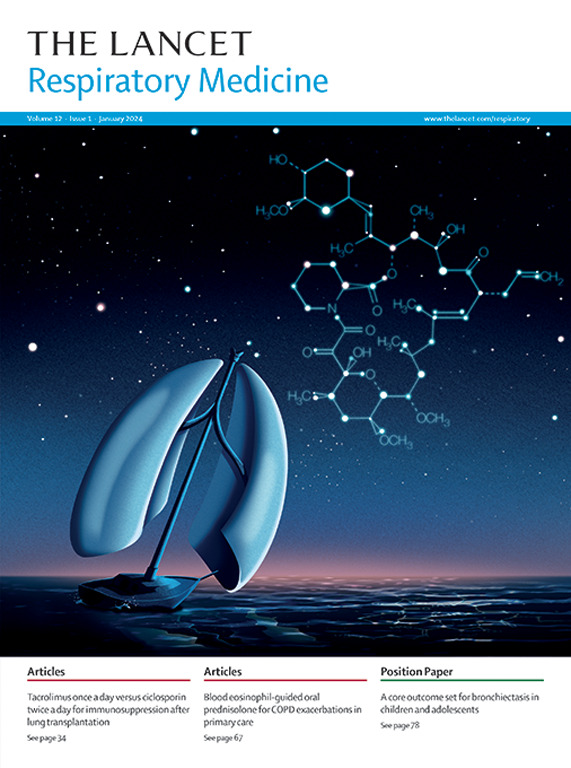Genetic and environmental risk factors for asthma: towards prevention
IF 32.8
1区 医学
Q1 CRITICAL CARE MEDICINE
引用次数: 0
Abstract
Asthma is a common chronic airway disease affecting an estimated 260 million individuals of all ages worldwide, contributing to substantial morbidity, mortality, and economic burden. Asthma is heterogeneous in age at onset (childhood vs adult onset), clinical presentation, type of underlying airway inflammation (type 2 high vs type 2 low), prognosis, and treatment response. Asthma is caused by multiple genetic and environmental factors, and possibly their interaction, across the life course. Genetic studies have provided important insights into the pathogenesis, biology, and immunology of asthma, fostering drug discovery. The role of polygenic risk scores in aiding asthma diagnostics and delineating individuals at high risk of asthma development is becoming more evident. Four modifiable environmental, social, and lifestyle risk factors for asthma are responsible for nearly 30% of the global disability-adjusted life-years asthma burden: high BMI, occupational exposures, NO2 (as a proxy for traffic-related air pollution), and smoking. These modifiable risk factors offer substantial opportunities for primary prevention of asthma, at the individual and societal level. National, regional, and global strategies aligned with the UN Sustainable Development Goals are urgently needed to attenuate the predicted increase in asthma cases by 2050.哮喘的遗传和环境危险因素:预防
哮喘是一种常见的慢性气道疾病,影响全世界各年龄段约2.6亿人,造成大量发病率、死亡率和经济负担。哮喘在发病年龄(儿童与成人发病)、临床表现、潜在气道炎症类型(2型高vs 2型低)、预后和治疗反应等方面具有异质性。哮喘是由多种遗传和环境因素引起的,可能是它们在整个生命过程中的相互作用。遗传学研究为哮喘的发病机制、生物学和免疫学提供了重要的见解,促进了药物的发现。多基因风险评分在帮助哮喘诊断和描述哮喘发展高风险个体方面的作用越来越明显。四种可改变的哮喘环境、社会和生活方式风险因素造成了全球残疾调整生命年哮喘负担的近30%:高BMI、职业暴露、二氧化氮(交通相关空气污染的代表)和吸烟。这些可改变的风险因素在个人和社会层面上为哮喘的初级预防提供了大量机会。迫切需要制定符合联合国可持续发展目标的国家、区域和全球战略,以减少预计到2050年哮喘病例的增长。
本文章由计算机程序翻译,如有差异,请以英文原文为准。
求助全文
约1分钟内获得全文
求助全文
来源期刊

Lancet Respiratory Medicine
RESPIRATORY SYSTEM-RESPIRATORY SYSTEM
CiteScore
87.10
自引率
0.70%
发文量
572
期刊介绍:
The Lancet Respiratory Medicine is a renowned journal specializing in respiratory medicine and critical care. Our publication features original research that aims to advocate for change or shed light on clinical practices in the field. Additionally, we provide informative reviews on various topics related to respiratory medicine and critical care, ensuring a comprehensive coverage of the subject.
The journal covers a wide range of topics including but not limited to asthma, acute respiratory distress syndrome (ARDS), chronic obstructive pulmonary disease (COPD), tobacco control, intensive care medicine, lung cancer, cystic fibrosis, pneumonia, sarcoidosis, sepsis, mesothelioma, sleep medicine, thoracic and reconstructive surgery, tuberculosis, palliative medicine, influenza, pulmonary hypertension, pulmonary vascular disease, and respiratory infections. By encompassing such a broad spectrum of subjects, we strive to address the diverse needs and interests of our readership.
 求助内容:
求助内容: 应助结果提醒方式:
应助结果提醒方式:


